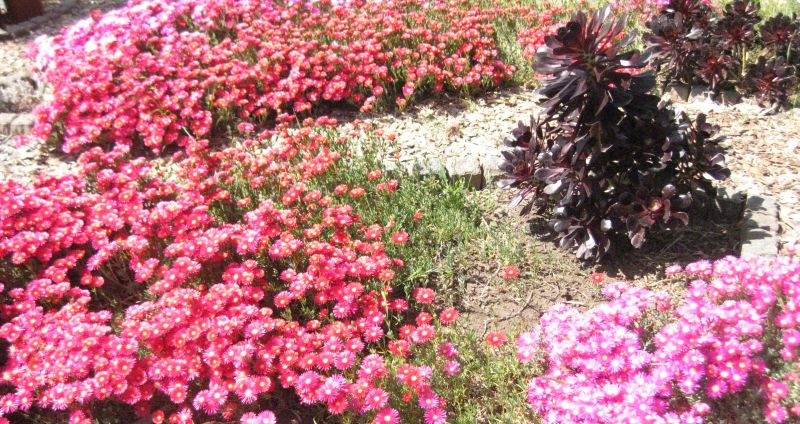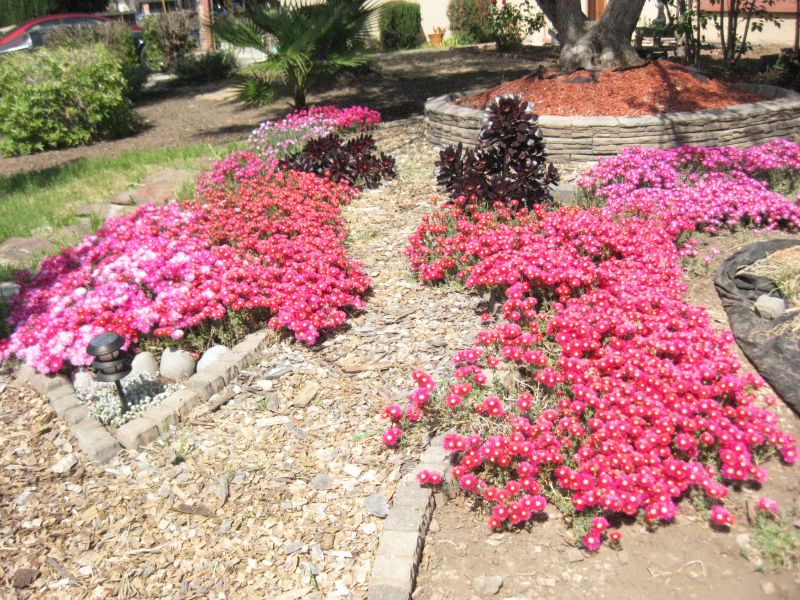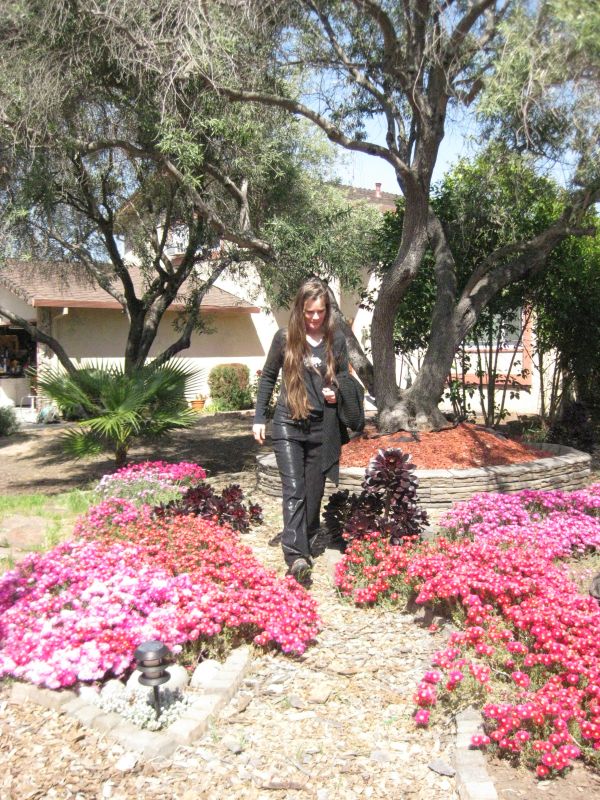Tuesday, May 19, 2009
This is Xeriscape

My wife and I are xeriscaping our lawn - transforming it from a green sucker-of-water into a still-green landscape of native plants that require little or no water. Lawns consume a lot of water, and this is one way we can make a difference that both saves the environment and saves money.
But a xeriscaped lawn isn't always just dirt, or just brown, or even just green. Here you see the succulents we've planted in fantastic bloom, which require almost no watering during the course of the year. During the day their flowers open in a brilliant polychromatic display; at night they close up.

We've also used low-water plants and trees, either existing ones or new ones planted that will require little to no water. Unfortunately new trees require some water to get started, and so the grass that would not grow before has come back with a vengeance (as you can see in the upper left).

We've made the problem a little harder on ourselves by using reclaimed materials as much as possible, letting plants grow out to fill the space rather than buying more, planting from cuttings, using no artificial fertilizer, and using almost no artificial pesticides (other than slug pellets, which we could not avoid using as they love succulents). So it's taking some time ... we're in the start of the second year of our front yard landscaping.
But after that first year, it's starting to bear fruit. Already the result is a wonderful Seussical landscape that requires little to no watering. Who knows what it will look like after another year.
-the Centaur
Pictured: our front lawn, with closeups of the flowering succulents (grown into the space on their own), a medium shot of the path (made from reclaimed wood chips), and a long shot of the tree (saved from death with a little mulching), the path and the gardener.
// posted by Anthony Francis @ 4:49 PM Permalink

 By day, Anthony Francis makes computers smarter; by night he writes science fiction and draws comic books. He lives in San Jose with his wife and cats but his heart will always belong in Atlanta.
By day, Anthony Francis makes computers smarter; by night he writes science fiction and draws comic books. He lives in San Jose with his wife and cats but his heart will always belong in Atlanta.
Comments: